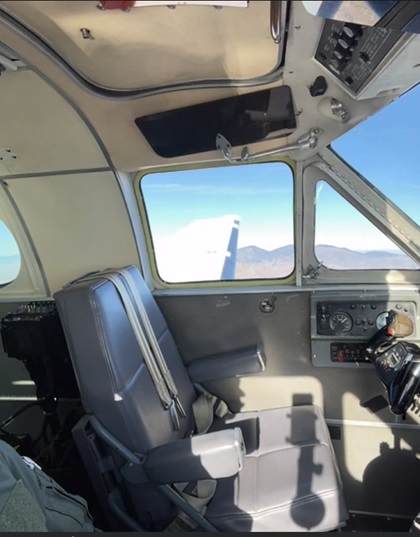Tech startup automates King Airs
Another tech startup has emerged from “stealth” mode with plans to automate aviation. Merlin Labs, founded in 2018, announced in late May that it has logged “hundreds of autonomous missions on multiple aircraft types, including complex twin turboprop aircraft”—specifically, Beechcraft King Airs.
Many of the details remain under wraps. The press release announcing that Merlin Labs exists, and has been logging twin turboprop hours flown by an aircraft-agnostic system made to replace all humans on the flight deck, omits a few important details, such as how these aircraft avoid midair collisions. A story posted online the same day by The Verge suggested that the system relies heavily on radar and ADS-B surveillance.
TechCrunch noted in its coverage of the announcement that Merlin’s system also has natural language processing capability, allowing air traffic controllers to “talk” to these robotic King Airs as they would if a human were aboard. George told TechCrunch that the system will be able to respond in kind, with a “high degree of cognition.”
The company’s opening media volley included a YouTube video that is slickly produced, but offers few details of exactly how the company plans to secure FAA approval to operate twin turboprops in the national airspace system with no human pilot on board. The Merlin Labs website was similarly circumspect. The scenario laid out so far calls for minimal human supervision of these autonomous aircraft, with a single pilot overseeing many flights from a remote location.
That’s the more ambitious version of the general approach to aircraft automation (full autonomy on day one) that is gaining traction among a new generation of engineers and computer programmers. Many of them were not yet born when United Airlines Capt. Alfred Haynes and his crew improvised a way to steer a McDonnell Douglas DC–10 with a crippled hydraulic system to a crash landing in Sioux City, Iowa, on July 19, 1989. While many lives were lost, 185 of the 296 people on board survived, and the flight crew’s innately human ability to improvise was cited weeks later in a New York Times story about how increasing aviation automation was raising concern about safety. Central to this concern was the prospect that human skill would degrade if pilots were not engaged throughout each flight, if they allowed the high degree of automation to lull them into complacency, and if their new role on the flight deck delayed their ability to assess and respond to a system failure or other emergency.
More than 30 years later, many of the same concerns about taking humans “out of the loop” of aircraft control persist. Automation, and interaction between humans and machines on the flight deck of Boeing 737 Max aircraft, was also a factor in two crashes in 2018 and 2019 that killed hundreds of people and called into question whether Boeing could survive the worldwide grounding of the latest iteration of the 737 that lasted until late 2020.

A much more recent story (published June 12) in the New York Times details the many billions of dollars that have flowed into recent efforts to create electric vertical takeoff and landing aircraft that investors and inventors hope will radically transform transportation.
Many of this cohort of “flying car” contenders plan to keep human pilots on board for years to come, in part because that is seen as a much faster path to FAA approval. Reliable Robotics, which has automated aircraft including a Cessna Caravan that is optionally piloted from engine start to parking and shutdown by human or computer, is among those taking this more conservative approach to expanding the responsibilities of the traditional autopilot. Reliable Robotics CEO Robert Rose said in a recent interview that he expects humans will remain in the aircraft control loop for years to come, though possibly from a remote location, and particularly for cargo or repositioning flights with no passengers or crew aboard. Few in the industry expect the FAA to approve welcoming paying passengers aboard fully autonomous aircraft any time soon. Rose noted that in-flight emergencies and other hard-to-predict events remain a daunting challenge for computer programmers, particularly when the situation requires choosing the least-worst of various bad options.
Merlin Labs announced that Dynamic Aviation of Bridgewater, Virginia, has partnered with Merlin to automate 55 Beechcraft King Airs. The same press release led with news of a $25 million influx in venture capital investment. Neither company involved in the King Air automation project ventured a guess on when FAA approval might be anticipated. Flight testing continues at the Mojave Air and Space Port Airport in California.




